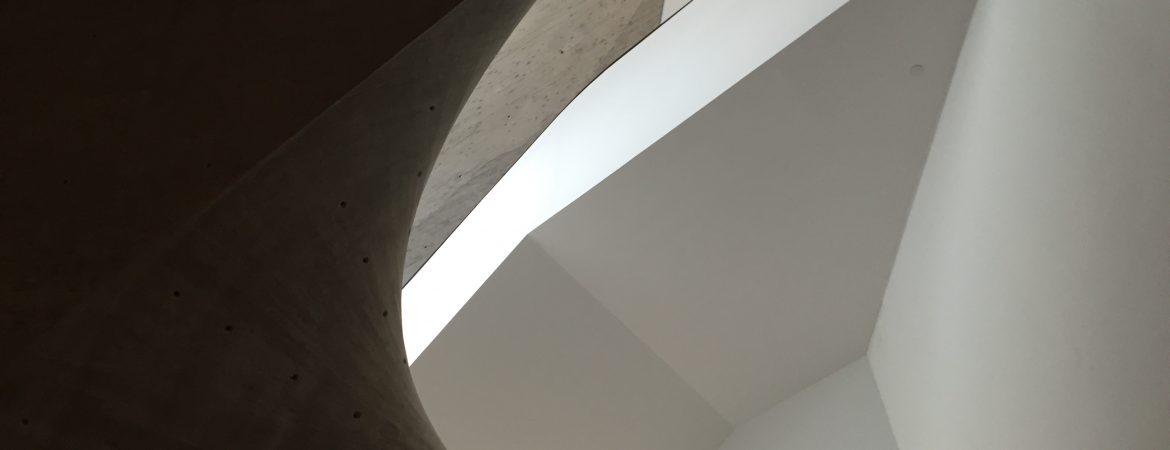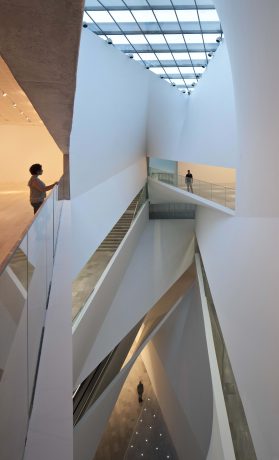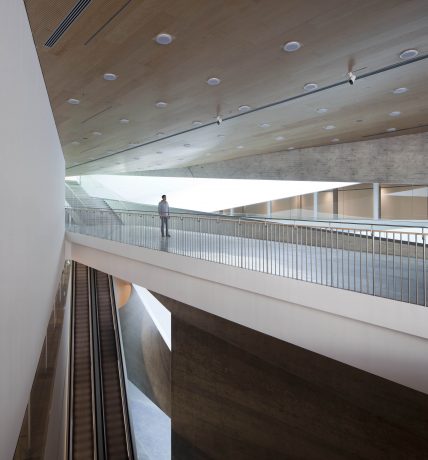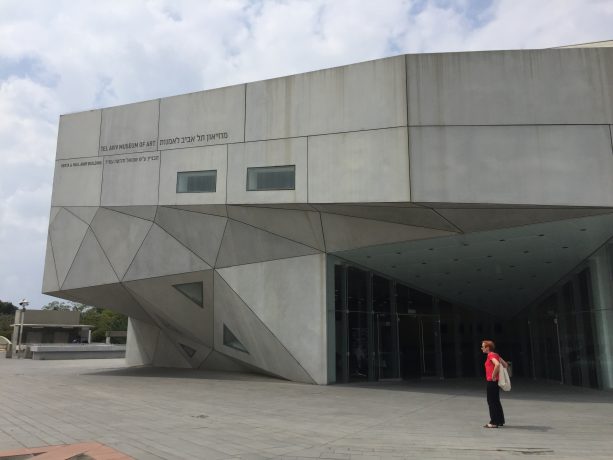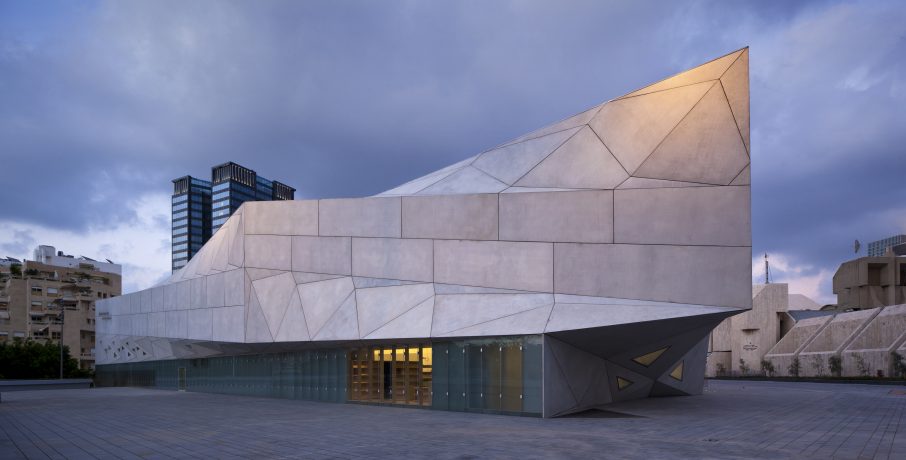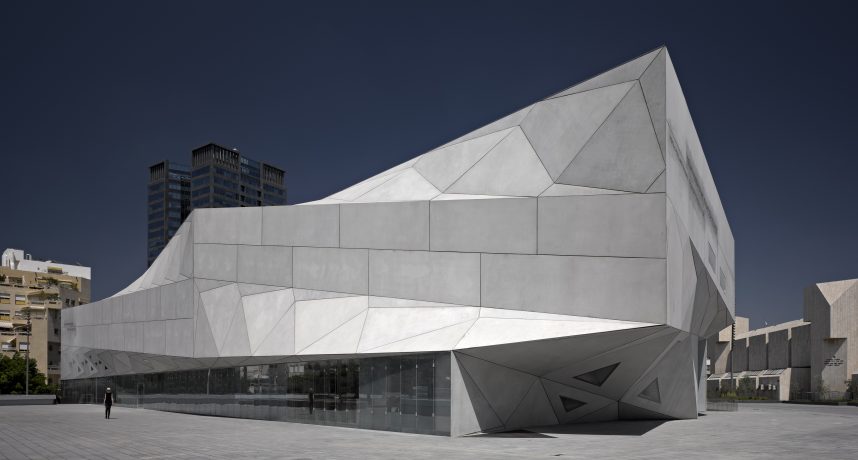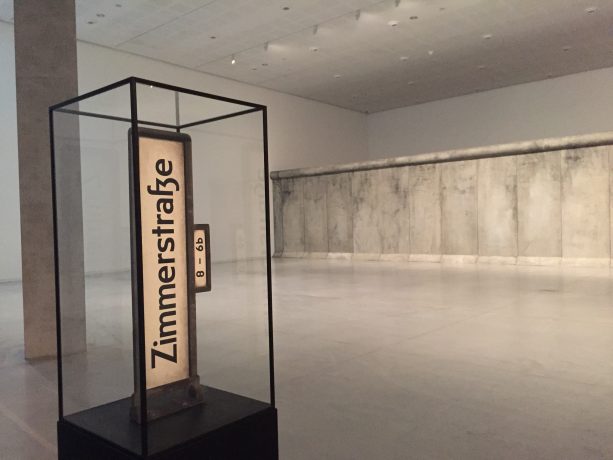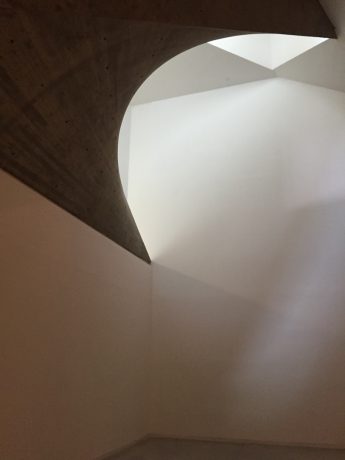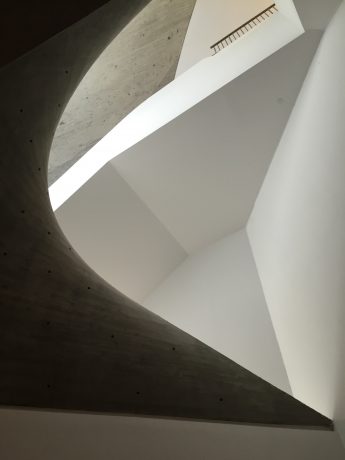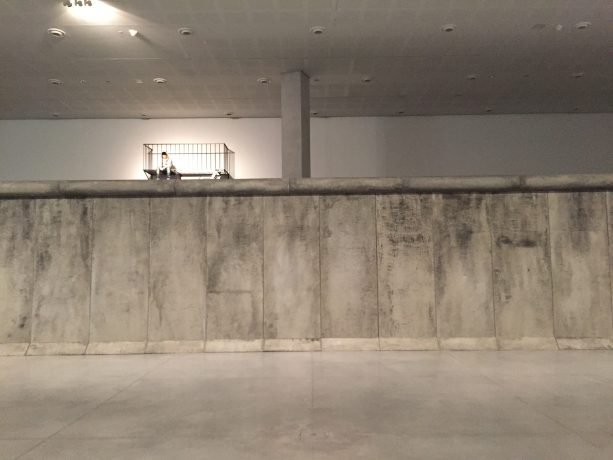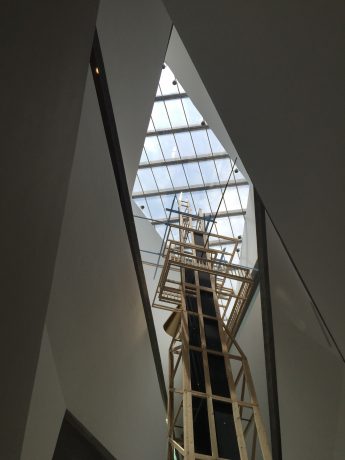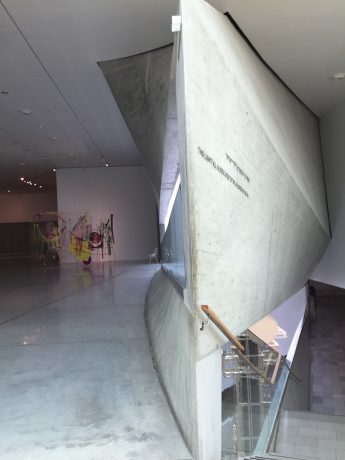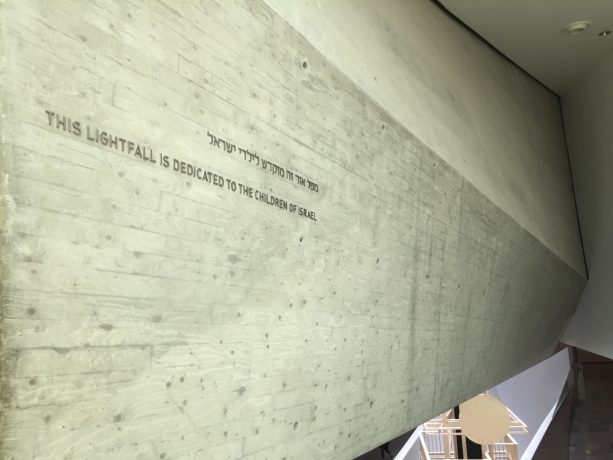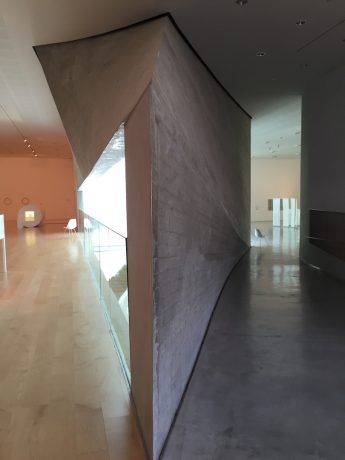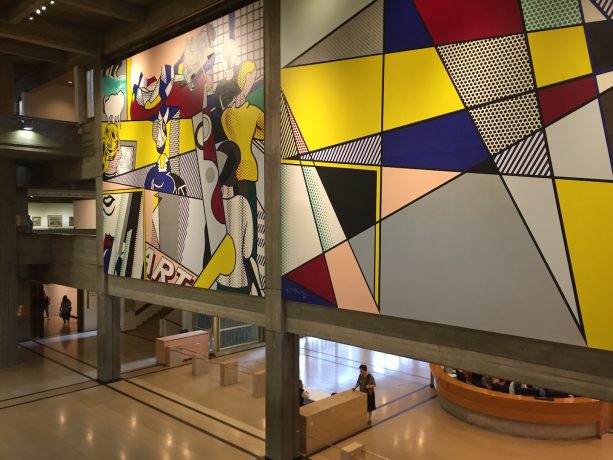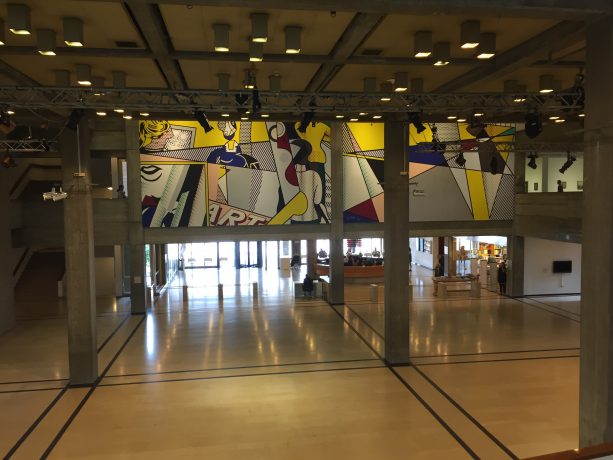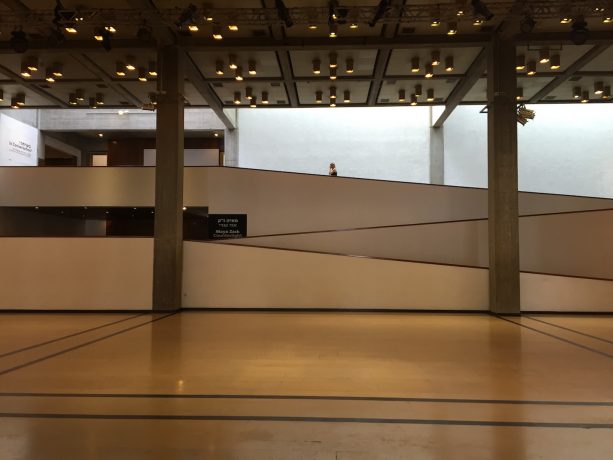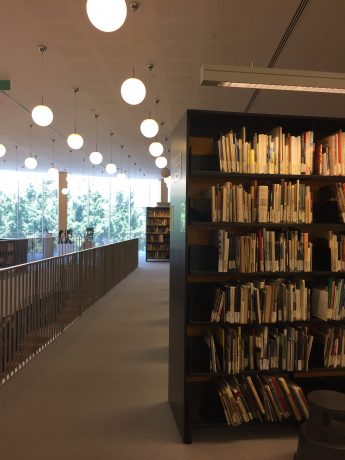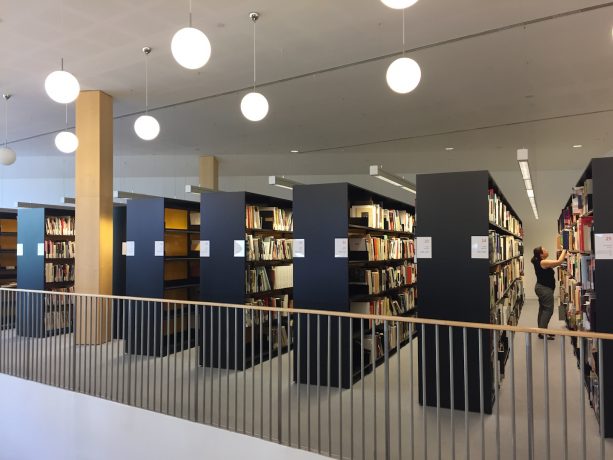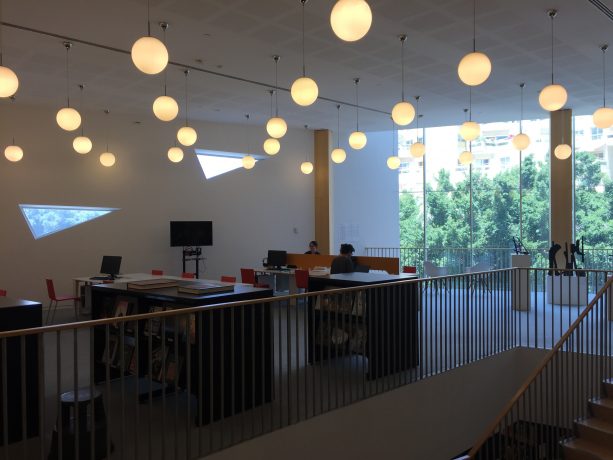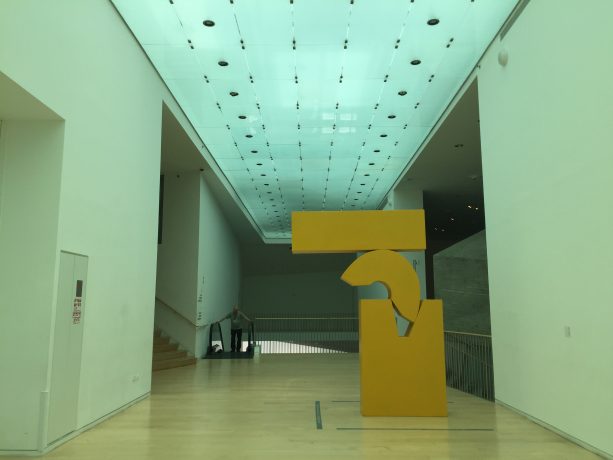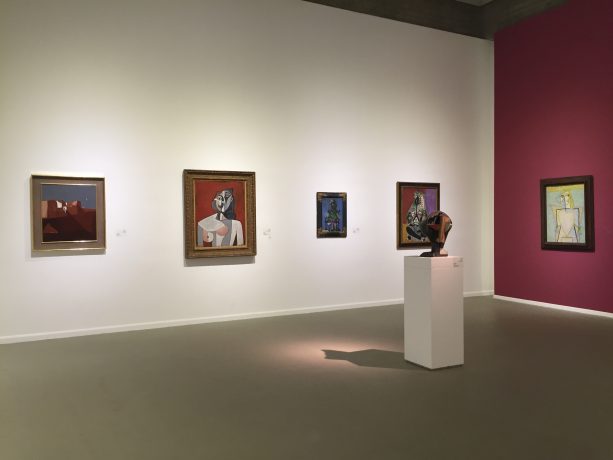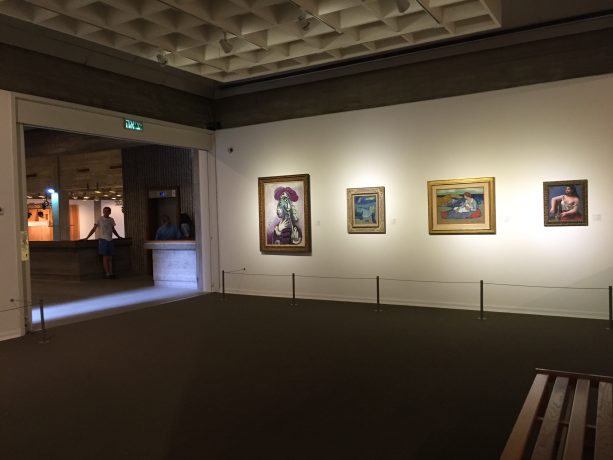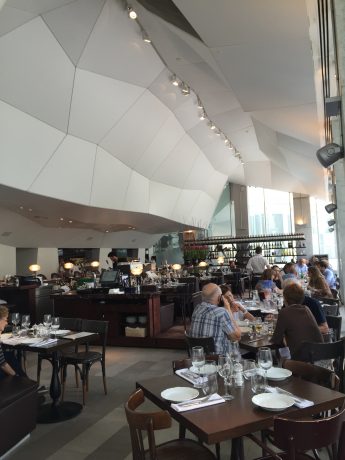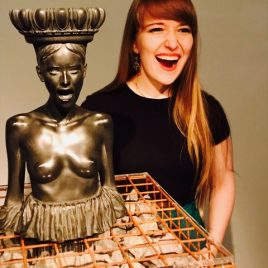Tel Aviv Museum of Art surely is one of the most unusual places we have visited. Every time we traveled to Israel before, we saw it through the perspective of a historical must-see or a great vacation spot. However, within the past decade, Israel made a strong comeback to the international cultural scene with its fantastic world-class museums. Intrigued, Museeum packed up for an art trip around Israel. Our first stop was the Tel Aviv Museum of Art, situated in a cultural hub by the opera house, theatre, library and security towers (so that you don’t forget where you are).
Upon entering the museum’s Main Building, the warehouse-type space created by Israeli architects Dan Eytan and Yitzhak Yashar, you can see, touch and feel the classical brutalist architecture that flourished in 1970s. The term “brutalism” (from the French “raw”) was used by Le Corbusier to describe his choice of béton brut (raw concrete). When you move to the New Building made of concrete, you feel the opposite, you float! On your way there, stop to admire Roy Lichtenstein’s site-specific work that he notably completed right here in 1989. The artist included in the work allusions of the permanent collection items by Chagall, Picasso and other masters. Highlights of the museum collection include selection of eminent paintings by Pablo Picasso, Gustav Klimt, Wassily Kandinsky, Vincent Van Gogh, Paul Gauguin, Marc Chagall, Claude Monet, Paul Cezanne, Salvador Dali, Henri Moore, Auguste Rodin, Jackson Pollock and many others.
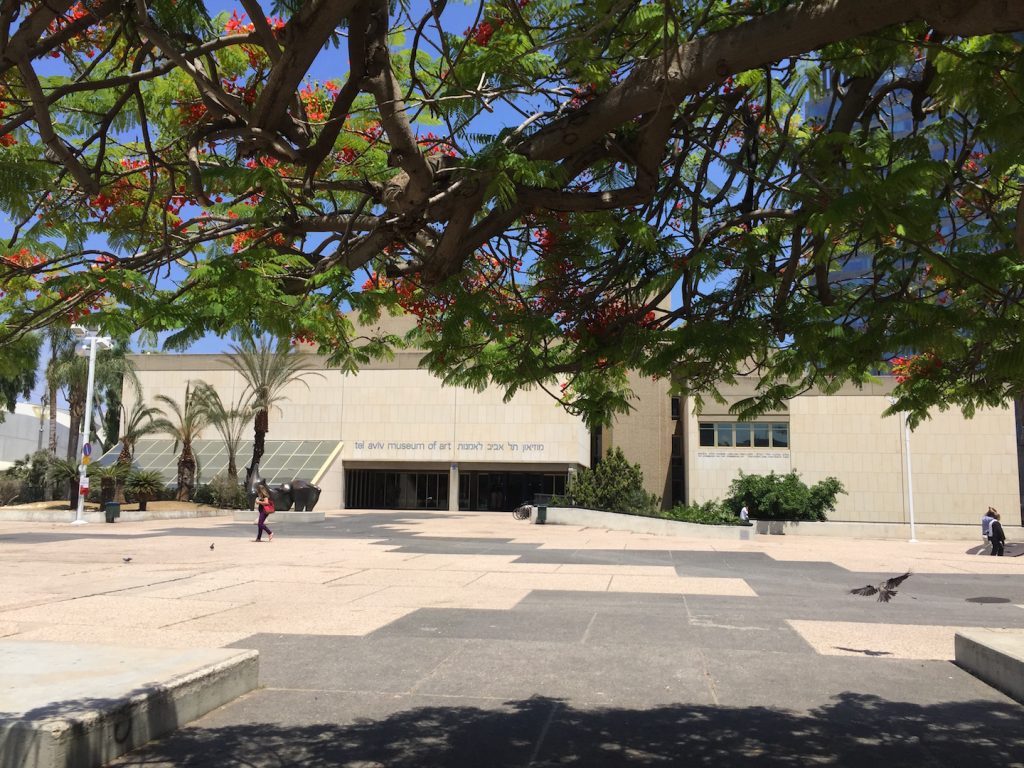
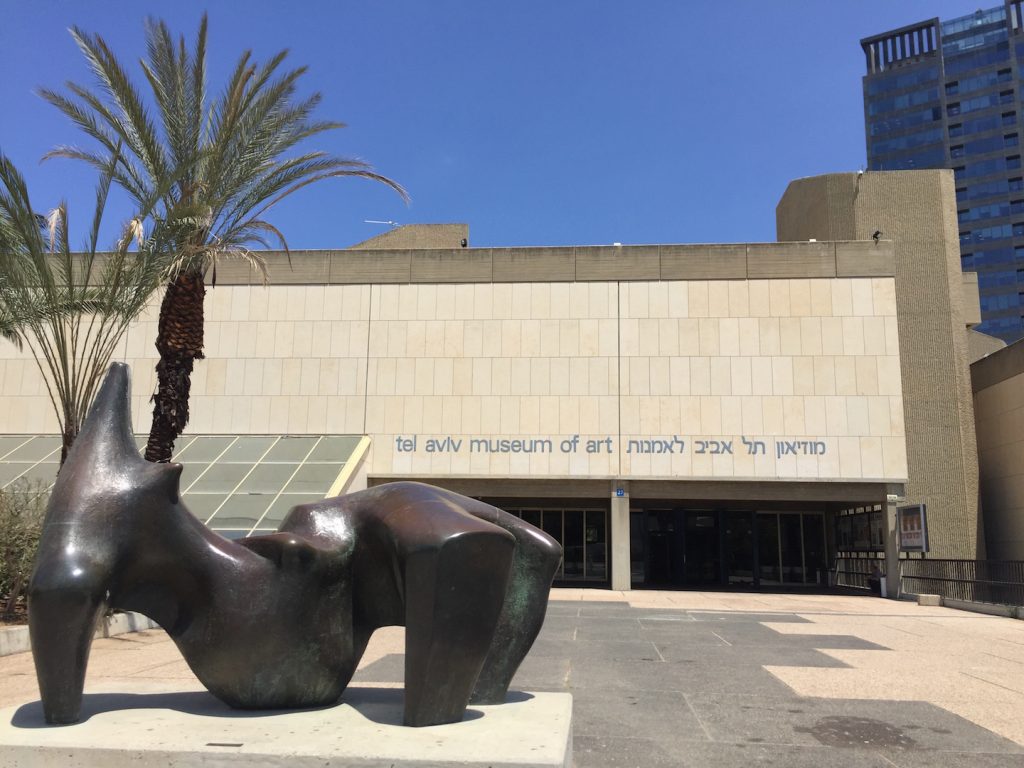
The collection is so vast that the new building was greatly needed, and it was soon created to double up exhibition space. Passing by the small, but cozy sculpture garden that connects the Main Building to Herta and Paul Amir New Building, we met up with International Relations manager Jessica Vrazilek to talk about the 2011 addition to the museum, designed by architect Preston Scott Cohen.
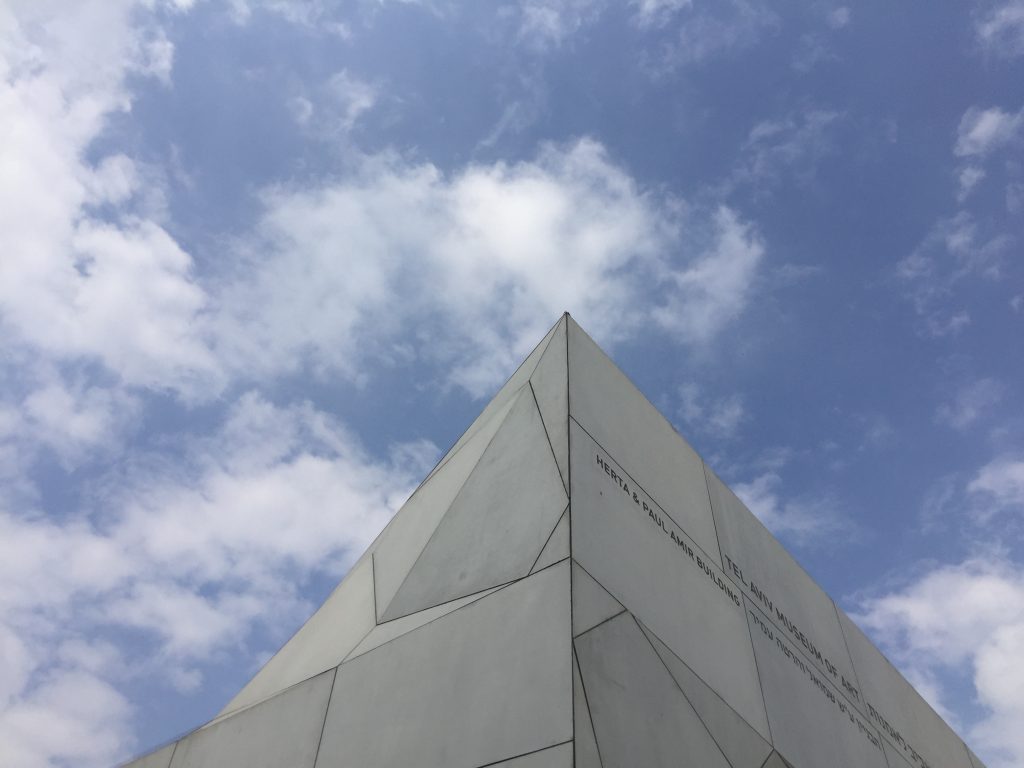
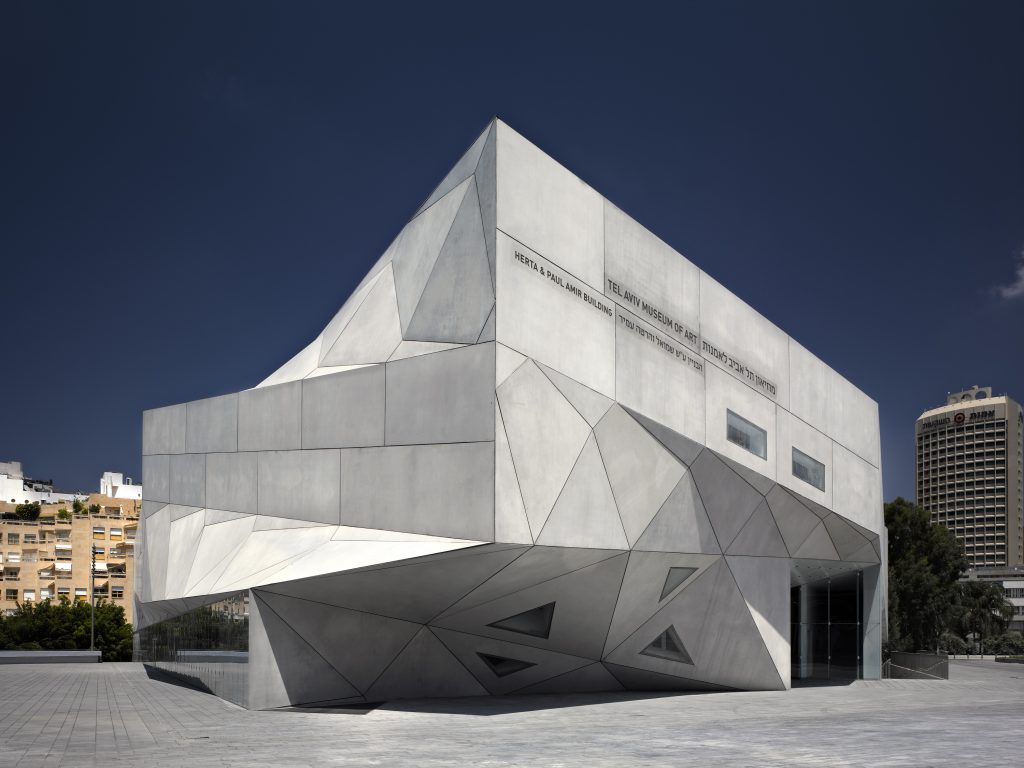
The two museum buildings are very different. Herta and Paul Amir Building has a unique voice and it is an architectural marvel, yet they go together so well! How was this project chosen?f
The buildings are very different from the outside, but actually they are very much related. If you note the ramp across from Lichtenstein you can see that the New Building diagonal lines mirror the ramp stairway, it is a tribute to the Main Building. The galleries are composed according to multiple significantly deviating axes, because the space for the museum is very complicated – triangular plot of land, where the architect cannot build too high (because of restrictions on height, since security towers are situated right across the street) and cannot build too low (because of the humidity level that may harm the artworks). Moreover, the architect had to fit rectangular galleries in a triangular piece of land. At the time Preston Scott Cohen worked on the project, he was Chair of Architecture in Harvard and it was his first public building, that definitely made his work stand out.
From the outside we assumed there would be no natural light, but now we see natural light is central to the museum! How did you achieve this?
Central feature of the New Building is the Lightfall. Preston Scott Cohen wanted this space to remain empty for the first year and so it did. From 2012 artists create site-specific works for our Lightfall, current exhibition includes “Minaret of Defense”, a 25-meter (82 foot) structure by Zik Group that mirrors the security towers standing alongside the museum. We utilize this space in very different ways, but it always gives emphasis to the Lightfall. The New Building may look like a cement cube, but it is so light and airy.
What material was used to create the building? At a first glance it looks like painted wood.
It is cement cast on wood panels, an old technique, that was used to give it the unique shape. Anyone, who has ever worked with cement, would know that it is meticulous, hard work to make it look this way – each cement piece is different, all structures were cast right here, in the basement of the museum, that makes it extra special. The New Building does look like a wooden boat, it has ship-like quality to it. And this “boat” was actually created to exhibit Israeli artists and double up our space. Now we have 3 galleries of Israeli artists’ permanent exhibitions (they get refreshed every 3 years); large space to showcase contemporary art; two auditoriums, where you can watch screenings and films, listen to lectures, take part in master-classes, enjoy music and dance performances. The Museum houses the biggest art library in the Middle East. The New Building entrance was foreseen in a way, so the “road” would take you straight to the library! The architect and the Museum want it to represent the path of enlightenment, that’s pivotal for contemporary art. The infusion of culture is one of the museum’s building blocks.
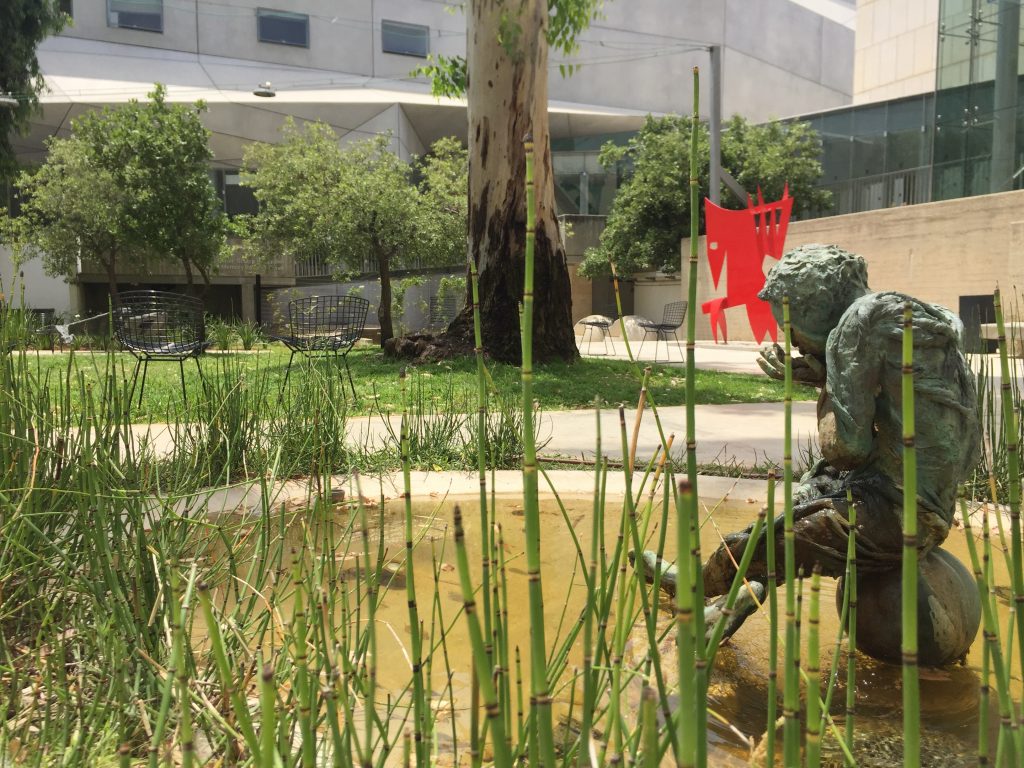
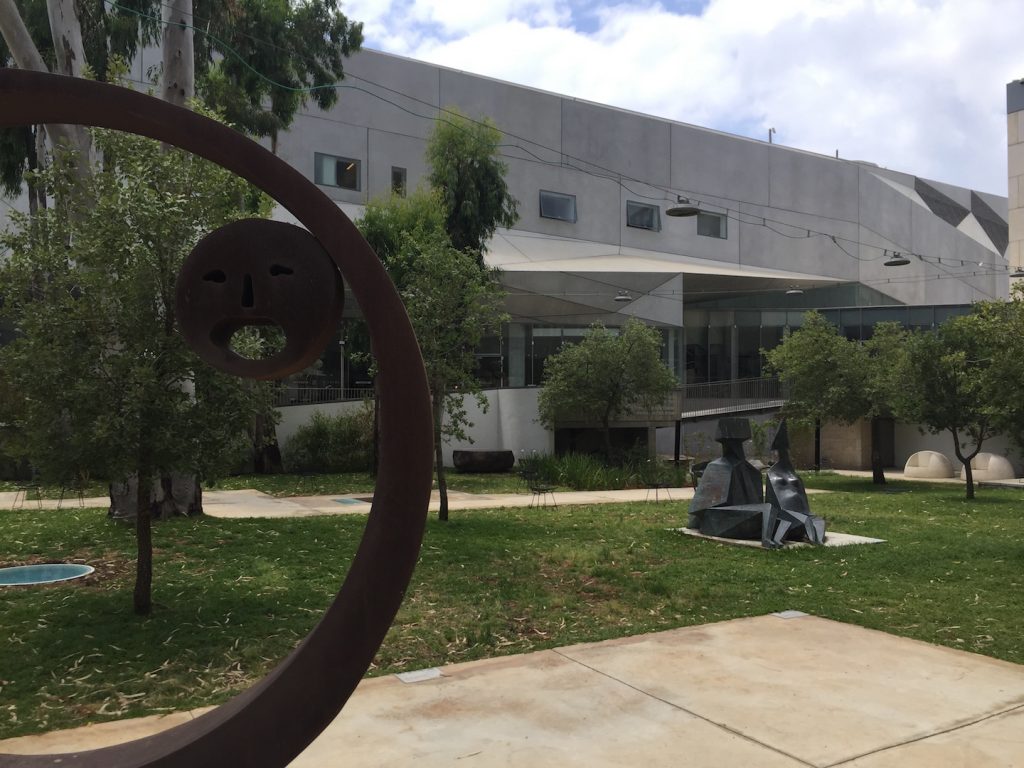
What are the main challenges you face as an organization? With the building process it was the height and shape, and what would be the issues of today?
We do our best to overcome the usual museum’s challenges: funding, looking for interesting exhibitions, rising awareness of contemporary art. A lot of people, including artists have very strong opinions about Israel, so sometimes we have to convince them, address concerns that they might have. I believe that art shouldn’t be restricted. If an artist has a strong opinion about something – let his or her art speak for itself! While we strive for everyone to feel comfortable here, so we are working on everything to be trilingual; we want all labels to be in Hebrew, Arabic and English. For now you can see it only in the New Building. We do not practice the cookie-cutter approach, since there is always going to be controversy. What I love about this museum is that it is very opened and we try to create dialogue and not to divide people.
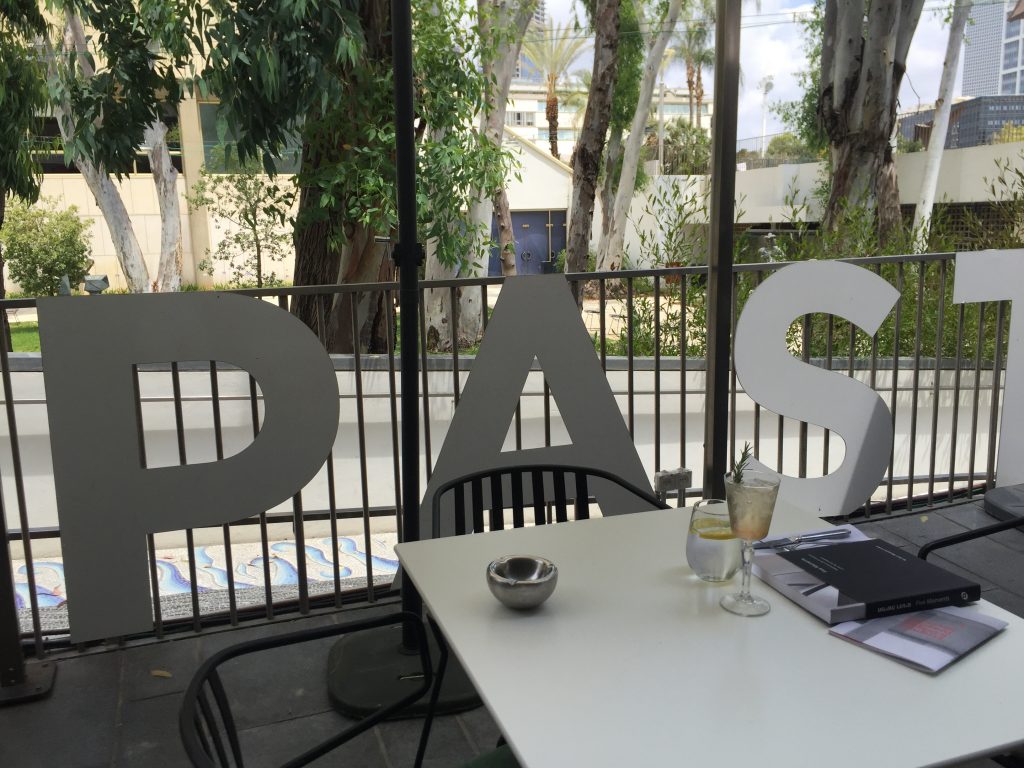
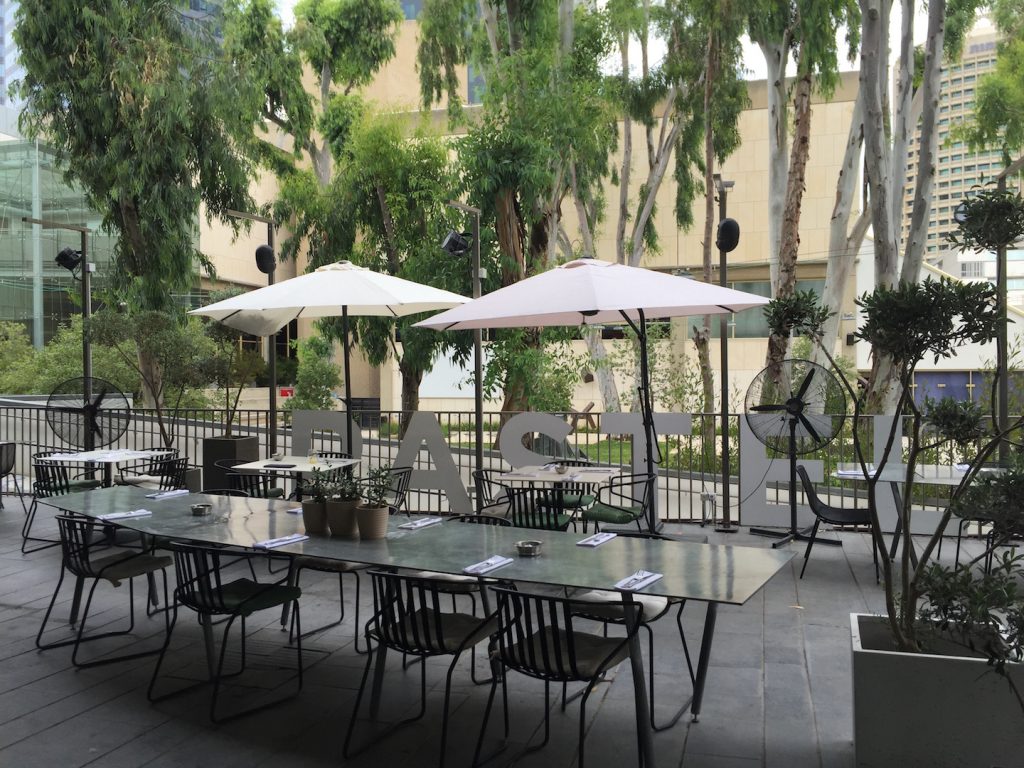
We were somewhat taken aback by Elmgreen & Dragset artworks, but that’s the kind of pieces you are ready to see in a unique space like that!
Their “Powerless Structures” – Donations box, Modern Moses by an ATM machine, exact replica of the Berlin Wall and others are located all over the museum. There are no labels, the artists want you to figure the works out, it’s a challenge that keeps you on your toes. And that’s what contemporary art is partially about, while the museum, as an institution wants visitors to dwell on issues of paramount importance.
After a beautiful and peaceful walk around the museum we decided to dwell on what we’ve seen, sitting down in Pastel restaurant overlooking the sculpture garden. 3 hours in the museum passed by so fast and we could easily stay there longer!
